Bonhams Announces Highlights for London Asian Art Week Sales in November
Courtesy Bonhams.
This November, Asian Art in London returns to Bonhams with a series of four sales celebrating centuries of Asian artistry and ingenuity. The four sales comprise: "Asian Art" on 2 November (Knightsbridge), "Fine Netsuke from a French Private Collection" on 4 November (New Bond Street), "Fine Chinese Art" on 5 November (New Bond Street), and "Fine Japanese Art" on 5 November (New Bond Street).
Asian Art
London Knightsbridge
2 November 10:30am GMT
Opening the series, Bonhams Knightsbridge Asian Art sale will feature a fine selection of more than 500 lots of porcelain, jade, scholar's objects, Buddhist art, furniture and textiles, all from China, Japan, Tibet and the Himalayas. Highlighting the sale is the Robert Stanley Hope Smith Collection of Chinese ceramics ranging from the Han to the Qing Dynasties.
Mr. Smith was an avid collector of famille rose and famille verte porcelain, having made his first purchase at auction in October 1950 and becoming a member of the Oriental Ceramics Society in London in 1959. However, he did not shy away from forays into earlier periods of Chinese ceramics production, such as pottery, stoneware and porcelain from the Han, Tang, Song and Ming periods, as well as occasional Korean pieces. Part of this collection will also be offered in the Fine Chinese Art sale in London, New Bond Street, on 5 November.
Other highlights include an impressive famille rose baluster vase from the Yongzheng period (estimate: HK$10,000-15,000), beautifully painted in rich enamels with a landscape scene on one side, and a domestic scene on the other; and a blue and white rouleau vase from the Chongzhen period (estimate: HK$8,000-12,000), painted in vibrant washes of cobalt blue with an auspicious scene expressing the wish for a successful career within the civil service.
Lot 47. A famille rose baluster vase, Yongzheng period (1723-1735); 44cm (17 1/4in) high. Estimate £ 10,000 - 15,000 (€ 11,000 - 17,000). Courtesy Bonhams.
Delicately enamelled to the obverse with an elegant lady and two boys among fine tables and antiques, their features and details finely outlined in iron-red and black, the scene filled in rich pastel colours, the reverse with a poetic landscape scene of scholars in pavilions on a mountainous lakeshore dotted with trees, the short sides respectively with flowering peonies and camellias, the thickly potted vessel covered in a bluish-white glaze and decorated with reticulated 'chilong' paired handles.
Lot 247. A blue and white 'Pointing to the rising Sun' sleeve vase, Chongzhen period (1627-1644); 47cm (18.1/2in) high. Estimate £ 8,000 - 12,000 (€ 8,900 - 13,000). Courtesy Bonhams.
Painted with a gathering of gentlemen and attendants on a pavilion terrace, the figure in official attire pointing at the rising sun whilst his attendant is holding a vase with three polearms, the scene signifying a wish for a speedy and high promotion, all beneath formal leaf lappets to the neck.
The sale will also feature a European private collection of huanghuali scroll and brush pots, as well as a private collection of painted storage chests and furniture from Tibet, whose designs beautifully illustrate the lively exchange of goods, ideas and motifs between the areas.
Fine Netsuke from a French Private Collection
London New Bond Street
4 November 2:00pm GMT
Few Asian miniature objects captivate Western audiences as powerfully as the toggles called 'netsuke' in Japanese. Netsuke rapidly developed from utilitarian objects into miniature sculptural masterpieces and today they are sought after by enthusiasts worldwide. Bonhams is delighted to offer another single-owner sale of netsuke, collected with passion and discernment by a French gentleman over some three decades. The 152 charming and diverse lots encompass fauna (including many zodiac animals), amphibians, and insects, as well as heroes and deities from East Asian myth and religion.
Headlining the sale are 15 examples by Tametaka Kitaemon, who is best known for animal sculptures carved in a bold, compact style, and is one of 57 individuals featured in Soken Kisho, an authoritative listing of leading netsuke artists published in 1781. Tametaka is also the founder of a school of carving based in the central city of Nagoya.
Lot 144. A wood of two shishi, by Tametaka, Nagoya, 18th century; 4cm (1 9/16in). Estimate: £15,000-20,000. Courtesy Bonhams.
Painted with a gathering of gentlemen and attendants on a pavilion terrace, the figure in official attire pointing at the rising sun whilst his attendant is holding a vase with three polearms, the scene signifying a wish for a speedy and high promotion, all beneath formal leaf lappets to the neck.
Provenance: Harriet Szechenyi Collection.
Purchased in these rooms, 8 November 2011, lot 29.
Published: Bandini, SON, p.15, no.20.
Lot 57. A wood netsuke of a long-eared rabbit, attributed to Ranko, 19th century; 3cm (1 3/16in). Estimate: £3,000-4,000. Courtesy Bonhams.
The small rabbit with its legs drawn in, forming a compact position, one ear slightly lifted, the other resting along its back, its eyes inlaid, the wood lightly stained and well patinated; unsigned.
Provenance: Sydney L. Moss.
L. and Y. Laufer Collection.
Purchased at Sotheby's, Paris, 18 December 2012, lot 271.
Lot 97. A wood netsuke of a recumbent boar, by Tanaka Minko (1735-1816), Tsu, Ise Province, late 18th /early 19th century. Estimate: £3,000-3,500. Courtesy Bonhams.
The boar lying, its legs tucked in to form a compact composition, the eyes double inlaid in copper and horn; signed Minko with a kao.
Provenance: Purchased at Piasa, Paris, 1 June 1999, lot 447.
Lot 135. A wood netsuke of a wasp in a rotting pear, by Gekko, late 18th /early 19th century; 4.6cm (1 13/16in) high. Estimate: £4,000-5,000. Courtesy Bonhams.
The pear of typical form, carved all over with ukibori pimples, the wasp delicately rendered, eating its way through a large hole gnawed on one side, the wood stained for effect, the wasp's eyes inlaid; signed in cursive characters on a small raised gourd-shaped reserve Gekko.
Provenance: Adrienne Barbanson Collection.
Purchased at Ader, Hotel Drouot, February 1987.
Note: A fine example of a type made by several netsukeshi, including Kogetsu, Sangetsu, Gochiku, and Ichiminsai. For a discussion of this distinctive group of carvers and their work, see R. Bushell, CN, pp.100-102.
Lot 147. A wood netsuke of a kappa on a tortoise, by Naito Toyomasa (1773-1856),Tanba province, early 19th century; 3.7cm (1½in). Estimate: £8,000-10,000. Courtesy Bonhams.
The kappa with a bemused expression, sitting on top of the tortoise, its long hair flowing down its back, the tortoise with its head turned to the left, its limbs tucked in for compactness, the eyes of both double inlaid; signed Toyomasa.
Provenance: R. Motola Collection, Italy.
Purchased at Eskenazi, March 1984.
Published: INS, PE, no.82.
Note: For a similar example from the M. T. Hindson Collection, see R. Bushell, CN, p.69, no.93.
Fine Chinese Art
London New Bond Street
5 November 10:30am GMT
The flagship New Bond Street sale of Fine Chinese Art will present an exceptional selection of Chinese furniture, ceramics and works of art from collections across the UK and Europe. Leading the Chinese classical furniture category is a remarkable collection of huanghuali furniture from the former Assistant Commissioner of the Shanghai Municipal Police between 1919 and 1928. This includes an exceptionally rare low-back armchair, 17th century, exquisitely decorated with a pair of confronted "chilong" on the back panel and side struts shaped as "Shou" characters. A nearly identical chair is in the Qing Court Collection, Forbidden City, the Palace Museum, Beijing. This lot carries an estimate of £50,000-80,000 (Lot 88).
Lot 88. An exceptionally rare low-back armchair, 17th century; 82cm (32 2/8in) high x 58cm (22 7/8in) wide x 45cm (17 6/8in) deep. Estimate: £50,000 - 80,000 (€ 55,000 - 89,000). Courtesy Bonhams.
The chair with a rectangular top rail mortised and tenoned to the stiles, inset with a central reticulated panel finely carved with a pair of sinuous and confronted chilong, the stiles continuing through the seat frame and extending as the back legs, the arms mortise and tenon to the stiles and posts supporting a shou shaped strut on each side, continuing through the seat and extending as the front legs, the hard cane seat bordered by a horizontal stretcher set with vertical pillar-shaped struts below, the plain aprons joined to the front legs by a shaped footrest.
Provenance: an English private collection, and thence by descent
The collection was formed by the grandfather of the former owner who was the Assistant Commissioner, Shanghai Municipal Police, 1919-1928. His father was a Protestant missionary in China. The family returned to England shortly after the Second World War.
Note: Compare with a similar huanghuali armchair, Ming dynasty, decorated with a identical design of entwined chilong as the present example, in the Qing Court Collection, in the Palace Museum. Beijing, illustrated in Furniture of the Ming and Qing Dynasties, vol.1, Hong Kong, 2002, p.53, no.39.
Often referred to as 'rose' writing chairs, this type with low rectangular arms and back is the smallest among the classic forms. The sense of elegance and lightness, conveyed by the use of humpback stretchers with pillar-shaped struts both above the seat frame, encouraged portable and functional ease.
The height of the present seat made it ideal for being placed against a window or wall, without obstructing a pleasant garden view. In addition, the straight back and arms, typical features of the meiguiyi, gave a sense of austerity to the scholars sitting in them.
For a detailed discussion of low-back armchairs meiguiyi and their Song dynasty origin, see S.Handler, 'Rose, Bamboo and the Low-Back Armchair', in Chinese Furniture: Selected Articles from Orientations, 1984-1999, Hong Kong, 1999, pp.250-256. See also Wang Shixiang, 'Development of Furniture Design and Construction from the Song to the Ming', ibid., p.44.
Also sharing the museum reference is a pair of very rare iron-red and green-enamelled ovoid jars Yongzheng six-character marks and of the period, from a European private collection (estimate: £120,000-150,000; Lot 55), which has an identical example in the Palace Museum, Beijing; as well as a fine Court painting of ladies playing chess, dating to the Yongzheng/Qianlong period (estimate:£60,000-80,000; Lot 101) . The painting is notable for the striking similarity of style with the famous Screen of the Twelve Beauties at Leisure, in the Qing Court Collection in the Forbidden City, the Palace Museum, Beijing, and may have indeed been executed by the same Court artists.
Lot 55. A pair of very rare iron-red and green-enamelled ovoid jars Yongzheng six-character marks and of the period (1723-1765); 18.5cm (7 1/4in) high (4). Estimate: £120,000-150,000 (€ 130,000 - 170,000). Sold for £ 312,562 (€ 345,563). Courtesy Bonhams.
Each jar finely potted with broad shoulders surmounted by a short upright neck, deftly and meticulously enamelled in rich and vivid iron-red tones depicting two front-facing and four further striding four-clawed dragons writhing with undulating scaly bodies and outstretched limbs amidst scattered flames above a turbulent sea of green-enamelled swirling waves, wood covers.
Provenance: acquired from Alfred Speelman Ltd, London, on 6 June 1968
An important European private collection, and thence by descent.
Note: The present pair of iron-red and green-enamelled 'dragon' jars, Yongzheng marks and period, is exceedingly rare and only a single example, in the Palace Museum, Beijing, appears to have been published; see The Complete Collection of Treasures of the Palace Museum: Miscellaneous Enamelled Porcelains Plain Tricoloured Porcelains, Shanghai, 2009, pl.253.
The decoration on the present jars was inspired by Chenghua Period design, but more closely, is a direct continuation of the Kangxi period, as demonstrated in the design of dragons on an iron-red cup and saucer, Kangxi, illustrated in Ceramics Gallery of the Palace Museum: Part II, Beijing, 2010, pl.320. The similarity to the Kangxi example and indeed the colour scheme, indicate an early Yongzheng period for the present lot. However, whilst probably near in date to the Kangxi period, the refined quality characteristic of Yongzheng period porcelains is apparent, both in the quality of the potting and the meticulous and delicate enamelling.
Lot 101. A very rare large court painting of ladies playing weiqi, Yongzheng-Qianlong period (1723-1795). Including the frame: 155cm (61in) wide x 99cm (39in) high. Estimate:£60,000-80,000 (€ 67,000 - 89,000). Sold for £ 125,062 (€ 138,266). Courtesy Bonhams.
Ink and pigment on silk depicting two Court ladies playing weiqi within a bamboo grove, each of the ladies with finely arched eyebrows and delicately painted strands of hair under ornate headdresses, clad in elegant loose flowing robes with exquisitely detailed hems, the black and gilt weiqi boxes and covers decorated with dense foliate scroll, the top right with a large apocryphal seal 'Jing ji shan zhuang' seal, glazed and framed.
Provenance: a distinguished Italian private collection formed circa 1930s-1940s, and thence by descent.
Note: The important Italian collector lived and worked in Shanghai between 1932 and 1936, as representative of his Italian company and in 1937, following the Sino-Japanese war, he was transferred to Dalian in Southern Manchuria. After a brief period spent in Italy in 1938, he returned to Shanghai where he lived between 1941 and 1946 and formed the vast majority of his collection of Chinese Art.
The most notable feature of the present lot is the remarkable similarity of the faces of the ladies with those in Yongzheng's famous Screen of Twelve Beauties in the Palace Museum, Beijing. Compare the faces and hems of the ladies with those in the Twelve Beauties at Leisure Painted for Prince Yinzhen, the Future Yongzheng Emperor (hereafter abbreviated as Screen of Twelve Beauties), by anonymous court artists in the Late Kangxi period, illustrated in China: the Three Emperors 1662-1795, London, 2005, pp.258-259, no.173. The uncanny similarity of the faces painted in realistic style with neat outlines and generous colour, follows the custom of depicting ladies of the Court as women of elegance and natural grace, and strongly points to the courtly origin of this painting.
The present lot closely follows the composition of another Imperial painted album, the Yue man qing you tu (月曼清遊圖) by Chen Mei 陳枚 (active in the early Qianlong reign), in the Palace Museum, Beijing. Painted in 1738, the album depicts the life of concubines over twelve months. One of the album leaves shows ladies playing chess in the exact same posture and position as the present lot, but within an interior. Therefore, one can see that the depiction of court ladies followed set models and precedents by court masters, which the present lot also follows.
By examining further the Screen of Twelve Beauties, we may understand too the background of the present lot. While the Yongzheng emperor was still a prince, he commissioned the set of paintings of twelve beauties for the purpose of decorating a screen in the Deep Willows Reading Hall, a study within his private quarters at the Summer Palace. An Imperial garden to the northwest of Beijing, the Summer Palace, was presented to the young prince in 1709 by his father, the Kangxi emperor. However, an item found in the archives of the Imperial Household Department notes that in the eighth lunar month of 1732, ten years into Yongzheng's reign as emperor, the twelve paintings were removed from the screen and individually stored.
Like the Screen of the Twelve Beauties, the present painting was also probably part of a larger screen or wall painting meant to decorate a palace. The apocryphal seal in the top right of the painting Jing ji shan zhuang (靜寄山莊), refers to an Imperial retreat in Panshan near Tianjin. Although the seal is apocryphal, it could refer to the original location where the present lot was from. Furthermore, like the Screen of the Twelve Beauties, the present lot was also at some point detached from a wall or screen and later cut into a more convenient and smaller section and re-mounted onto a different background. The format of the present lot is in keeping with 19th century practices of display; see for example J.Cahill, Pictures for Use and Pleasure: Vernacular Painting in High Qing China, 2010.
The artist of this painting as well as the Screen of Twelve Beauties portrayed the imagined beauties enjoying traditional Han Chinese leisure activities such as playing chess or weiqi, sampling tea, watching butterflies, and reading, as well as showing them in quiet reflection. This view reflects the late Imperial Chinese model of femininity, where women could engage in the traditionally male 'Four Arts of the Scholar' (playing the guqin, calligraphy, painting, and chess) whilst still being refined, delicate and attractively feminine. See S.McCausland and Lizhong Ling, Telling Images of China: Narrative and Figure Paintings 15th-20th Century from the Shanghai Museum, London, 2010, pp.65-7. The Manchu rulers, seeking to define themselves as the proper heirs to the throne of China, could not have missed the support of female intellectuality that many found even within the conservative Confucian tradition.
It would be tempting to suggest that the artist of the present lot also showcased the most popular costumes and hairstyles of Qing court women. However, it interesting to note that these ladies are dressed in the styles of the flourishing Chinese cultural centre of the Yangzi delta region, at a time when there were repeated Imperial efforts to block the growing Manchu tendency to take on Han Chinese folkways. The Qianlong emperor, like his predecessors an author of repeated prohibitions against Manchu adoption of Han dress - wrote that its appearance in one rendition of women attending the emperor was not to be taken seriously, dismissing it as 'painterly playfulness' (丹青遊戲); see J.Larsen, 'Women of the Imperial Household: Views of the Emperor's Consorts and their Female Attendants' in Proceedings of the Denver Museum of Natural History, no.15, November 1, 1998, p.24. One can surmise that the present lot and paintings like it, such as the Screen of Twelve Beauties and Yue man qing you tu, were following artistic conventions of the court rather than depicting the actual leisure garments of palace women.
Indeed, one can argue that the present lot encapsulates a fantasy. Wu Hung presents evidence associating these paintings of imagined court ladies in Han dress with the feminised and sexualised landscape of China, now intimately known by the Manchu conquerors; see Wu Hung, 'Beyond Stereotypes: The Twelve Beauties in Qing Court Art and the Dream of the Red Chamber' in Ming and Qing Women and Literature, Stanford, 1997, pp.306-322. These fictional female possessions of the emperor surrounded him as did the real women of his harem. These pictures of women gathered - whether made for the Kangxi, Yongzheng or Qianlong emperors - are for the private pleasures of a Manchu emperor as mates or as lovely paintings open to his gaze. The present lot does not show the formalised traditional garb of the Manchu conquerors worn in official portraits, but rather the forbidden, softer gowns of the Chinese who now submit to the Manchu emperor's rule.
Despite elements of artistic fantasy, however, there are some aspects of the present lot and similar paintings, which act as visual and historical documents of unparalleled authenticity. The black lacquered and gilt-decorated weiqi boxes on the table for example, are typical of the mid 18th century; compare with a similar pair of black and gilt-lacquered weiqi boxes and covers, Qing dynasty, from the Qing Court Collection, illustrated in the Compendium of Collections of the Palace Museum: Jade, 9, Beijing, 2011, p.105, no.87.
The present lot is a remarkable example of court painting, revealing not only artistic conventions of the court but also perceptions about the women of the court, documenting their refined demeanour and fine costumes, as well as the negotiation of cultural and ethnic boundaries between Han and Manchu, and finally the fantasies of Manchu emperors.
Also on offer is a strong selection of jade carvings dating from the Yuan to the late Qing dynasty. A notable example – from a distinguished Swiss collection – is a very rare pale green jade Imperial-inscribed 'tea of three purities' tea bowl and cover, Qianlong four-character mark and of the period. The vessel is incised and gilt with a poem composed by the Qianlong emperor, dated to 1746. The lot is estimated at £30,000-50,000 (Lot 138).
Lot 138. A very rare pale green jade Imperial-inscribed 'tea of three purities' tea bowl and cover, Qianlong four-character mark and of the period (1736-1795); 11.2cm (4 3/8in) diam. (3). Estimate £ 30,000 - 50,000 (€ 33,000 - 55,000). Sold for £ 118,812 (€ 131,357). Courtesy Bonhams.
The translucent jade expertly carved with deep rounded sides to a flaring rim from a short straight foot, incised and gilt around the exterior with a poem composed by the Qianlong emperor that ends with a Bingyin cyclical date (corresponding to 1746) and followed by two seals, Qian and Long, all enclosed between two borders of ruyi-heads, the domed cover similarly incised with the same text, the semi-transparent stone with frost-like inclusions, zitan stand.
Provenance: a Swiss private collection.
Note: It is rare to find inscribed jade tea bowls, as a number of these were usually made of porcelain, either decorated in underglaze blue or iron red. Compare with two porcelain bowls similarly decorated, the first in the collection of the National Palace Museum, Taipei, illustrated in Empty Vessels, Replenished Minds: The Culture, Practice and Art of Tea, Taipei, 2002, p.152, no.129; and another also in the National Palace Museum, Taipei, illustrated in Emperor Qianlong's Grand Cultural Enterprise, Taipei, 2002, p.51, no.I-40.
The poem on the current bowl, Sanqing cha (三清茶), 'Tea of Three Purities', was composed by the Qianlong Emperor. It has been mentioned that the Qianlong emperor was an avid drinker of tea, and in the 11th year of his reign (1746) on his return from visiting Mount Wutai, Shanxi Province, his entourage sojourned to make tea using fallen snow. In the brew, as well as Longjing tea leaves, were the three additions of prunus, pine nut kernels and finger citrus. It was this concoction that inspired the emperor to compose the present poem 'Tea of Three Purities'.
The poems on the cover and body are the same and were published in Yuzhishi chuji (Imperial Poems I) (1736-1747). Following the poem, the bowl and cover are inscribed Qianlong bingyin xiaochun yuti, 'inscribed in October of the Bingyin year of Qianlong' corresponding to 1746, following two seals, Qian long. The subject of the poem confirms that this bowl and cover was used specifically for drinking tea.
Compare with a related white jade tea bowl and cover, Qianlong six-character seal mark and of the period, with the same poem, which was sold at Christie's Hong Kong, 26 November 2014, lot 2931
The sale will feature a rare selection of archaic bronzes as well, including a rare archaic bronze ritual food vessel, gui, Early Western Zhou dynasty, 11th-10th century BC, from a UK private collection. Boasting an impressive pre-1978 provenance with eminent names, such as Earl Morse and Richard and Jean D. Salisbury, the vessel was included in the Spirit and Ritual exhibition held at the Metropolitan Museum, New York, in 1982. This lot carries an estimate of £80,000-120,000 (Lot 4).
Lot 4. A rare archaic bronze ritual food vessel, gui, Early Western Zhou dynasty, 11th-10th century BC; 29.2cm (11 1/2in) wide. Estimate £ 80,000 - 120,000 (€ 89,000 - 130,000). Sold for £ 110,062 (€ 121,683). Courtesy Bonhams.
The compressed globular body cast in high relief on each side with a pair of taotie masks with C-shaped horns and large boss eyes, divided by two mythical beast-headed loop handles set at the bottom with a tab, all supported on a high spreading foot cast in high relief with a band of eight dragons, the patina of gun-metal grey tone with light patches of malachite encrustation.
Provenance: Mr. Rafi Y. Mottahedeh, New York
Sotheby's New York, 4 November 1978, lot 308
Mr. and Mrs. Earl Morse, New York
Richard J. and Jean D. Salisbury
J.J. Lally & Co., New York
An American private collection
Sotheby's New York, 17 March 2015, lot 154
A distinguished London private collection.
Exhibited and Published: The Metropolitan Museum of Art, New York, 1982, Spirit and Ritual: The Morse Collection of Ancient Chinese Art, no.14.
J.J. Lally & Co., New York, June 1 to 25, 1994, Archaic Chinese Bronzes, Jades and Works of Art, no.53.
Note: The rendering of the masks that dominate the body of this vessel are characteristic of the early Western Zhou period. Large-scale animal masks appear on some of the most famous vessels of the period, such as the Li gui; see W.Fong, The Great Bronze Age of China, New York, 1980, no.41. The style established by such important works as the Li gui probably enhanced the popularity of this motif at the time.
Two related gui vessels from the reign of the third Zhou King, Kang Wang (1020-996 BC or 1005-978 BC) make it likely that the present lot was also produced during the same reign. See Bronzes of the Shang and Chou Unearthed in Shensi, Beijing, 1979, no.152.
Other highlights include a fine selection of Chinese dragon robes, such as a rare Imperial yellow-ground Twelve-Symbol 'dragon' robe, 19th century. Formerly owned by American socialite and philanthropist Anne Moen Bullitt (1924-2007), it is estimated at £40,000-60,000 (Lot 115).
Lot 115. A rare Imperial yellow-ground Twelve-Symbol 'dragon' robe, 19th century; 149cm (58 5/8in) long. Estimate £ 40,000 - 60,000 (€ 44,000 - 67,000). Sold for £ 112,562 (€ 124,447) Courtesy Bonhams.
The robe worked in satin stitch in shades of blue, green, red and pale violet and couched gold threads on the front and back panels, with nine five-clawed dragons pursuing 'flaming pearls' amidst clusters of clouds interspersed with bats, auspicious motifs and the Twelve Symbols of Imperial authority, all reserved on a rich Imperial yellow ground above the terrestrial diagram with lishui stripe at the hem, with dark blue-ground cuffs, collar and sleeve bands decorated with further dragons and clouds.
Provenance: Anne Moen Bullitt (1924-2007)
Christie's London, 15 May 2009, lot 317
Note: Anne Moen Bullitt was an American socialite, philanthropist, and horsebreeder. Her father, William Christian Bullitt, was the first American ambassador to the Soviet Union and later became his country's ambassador to France under President Franklin D. Roosevelt. In her youth she was regarded as a great beauty, and was known for assembling a wardrobe of rare and valuable classic haute couture items. She bought a 700-acre estate in County Kildare, where she enjoyed much success and fame in Ireland as a horse owner, breeder and trainer, and became the first woman in Ireland to be granted a racehorse trainer's licence.
Delicately embroidered with nine five-clawed dragons riding the heavens and worked in metallic gold and silver threads amidst a profusion of trailing clouds interspersed with the Twelve Symbols of Imperial Sovereignty, the present robe is a rare example of festive garments worn by the highest-ranking female members of the Qing society. Unlike robes worn by men, female garments lacked the two vents at the front and back.
Robes decorated with designs drawn from the repertoire of court symbols, such as the dragons, reinforced the privilege of an educated and sophisticated elite focused on the power of textiles to convey social status to the viewers. The quintessential symbol of Imperial power, five-clawed dragons embodied royalty and dominion and expressed the visual metaphor of the good ruler who behaved wisely for the well being of his subjects. The Twelve Symbols of Imperial Authority further reinforce the emperor's essence over eloquence, articulation, forcefulness and vigour. According to the 'Book of History' (Shujing 書經), the legendary Emperor Shun, believed to have ruled during the third millennium BC, referred to these symbols as suitable decoration for Imperial formal attire and in 1766, the Qianlong emperor restricted the use of these motifs to imperial robes. See G.Dickinson and L.Wrigglesworth, Imperial Wardrobe, Berkeley, 2002, pp.14-30.
A rigid scheme defined the position of the Twelve Symbols on the robes. The sun, moon, stars, and mountain, symbolised the four main ceremonies at which the emperor presided throughout the year at the Altars of Heaven, Earth, Sun and Moon. They were placed in pairs at the shoulders, chest and mid-back area. The paired dragons, the golden pheasant, the confronted ji character and the hatchet, represented all things on earth and the ruler's ability to make decisions. They decorated the chest area, while the sacrificial vessels, the aquatic grass, the grains of millet and the flames, representing ancestor worship and four of the Five Elements, were placed at the mid-calf level of the coat.
The seven-shaded lishui bands are flawlessly woven and include the aniline purple tone, which was imported into China from Europe circa 1863 and was highly favoured by the Dowager empress Cixi. See R. Silberstein, Vicious Purple or a "First Class Dye"?: Finding a Place for the Foreign in Nineteenth-Century Chinese Dress Culture, Paper presented at College Art Association Annual Conference, New York, 2013.
Compare with a similar yellow-ground Twelve-Symbol robe, 19th century, a slightly later example, also a woman's robe, illustrated in Secret Splendors of the Chinese Court: Qing Dynasty Costume from the Charlotte Hill Grant Collection, Denver 1982, pp.60-61.
A similar yellow-ground robe embroidered with the Twelve Symbols, 19th century, was sold at Christie's Hong Kong, 30 November 2011, lot 3143
Fine Japanese Art
New Bond Street
5 November 11:00am and 2:00pm GMT
The Fine Japanese Art sale, 400-lot strong, offers works in a variety of media and styles, from the Zen minimalism of iron sword fittings to the Victorian maximalism of decorated ceramics made for export. The works on paper section is anchored by a private collection of 50 woodblock prints designed by Kawase Hasui (1883-1957), whose tranquil, evocative landscapes earned him immense popularity in the United States and Europe during the 1920s and 1930s. Highlights include a woodblock print depicting Yumoto Spa, Nikko, dated 1937 (estimate: £1,000 – 1,500; Lot 374).
Lot 374. Kawase Hasui (1883-1957), An oban tate-e print, depicting Yumoto Spa, Nikko, Showa era (1926-1989), dated 1937, 39cm x 27.3cm (15 1/8in x 10¾in). Estimate: £1,000 – 1,500 (€ 1,100 - 1,700). Courtesy Bonhams.
titled on the left margin Nikko Yumoto onsen (Yumoto Spa, Nikko), depicting an elaborate branch of harunire (Japanese elm) framing inns nestled at the foot of mountains along the Yu River, the light from the windows reflected in the water, dated Showa juninen shichigatsu saku (Work of the seventh month of Showa 12 [July 1937]), published by Watanabe Shozaburo, Hanmoto Tokyo Ginza Watanabe mokuhan gaho seal on the lower right margin; signed Hasui with Kawase seal.
Also featured is a rare enamelled porcelain tripod dish (circa 1700) with a design of cherry blossoms (estimate: £20,000 – 30,000; Lot 201), made exclusively for the wealthy Nabeshima family of feudal lords. The world of the samurai is represented by several fully-mounted and matching sets of long and short swords, such as a gold-lacquer and Shibayama-inlaid tanto koshira-e (ornamental mounting for a short sword), Meiji era (1868 – 1912), late 19th / early 20th century (estimate: £8,000 – 12,000; Lot 120) as well as other imaginatively-carved and decorated toggles, incense cases, and accessories which capture the lively, mercantile ethos of traditional Japan's townspeople.
Lot 201. A rare large Nabeshima tripod dish,Edo period (1615-1868), late 17th/early 18th century; 6.8cm x 28.8cm (2 5/8in x 11¾in). Estimate: £20,000 – 30,000 (€ 22,000 - 33,000). Courtesy Bonhams.
Of circular form and painted in rich underglaze-blue and partially glazed in celadon with a design of cherry blossoms floating amid turbulent breaking waves, the underside similarly painted with an unusually elaborate design of stylised flowerheads, trailing foliage and scrolls, supported on three blue-glazed tall feet moulded with swirling clouds.
Note: Tripod Nabeshima dishes are comparatively rare; see a few other examples illustrated in Yasukochi Yukie and Tsuchida Ruriko, Nabeshima: Hokoritakaki dezain, (Nabeshima Ware: Designs That Inspire Pride), Tokyo, Suntory Museum of Art, 2010, p.122, no.91 and p.128, no.97; and Seki Kazuo, Nabeshima Kozara, Ai-Nabeshima kozara to sono shuhen, (Nabeshima Small Dishes: Underglaze Blue Small Dishes and Others), Osaka, Ko-Imari Kankokai, 1995, p.18, no.37.
For a smaller dish painted with the same design, see Asahi Shinbunsha, Iro Nabeshima, Fukuoka, 1982, p.13; and Asahi Shinbunsha, Les Cadeaux au Shogun, Porcelaine Précieuse des Seigneurs de Nabeshima, Tokyo, Asahi Shinbunsha, 1997, p.158, no.83.
Another footed example is illustrated in Kudo Yoshiro, Nabeshima ten: Waga kuni yuiitsu no kan'yo Nabeshima: Sono shutsugen kara shuen made (Nabeshima Exhibition Japan's Only Government Kiln Nabeshima: From Emergence to End), Imari-shi Kyoiku Iinkai, Imari, 1996, p.5, pl.no.6.
Lot 120. A gold-lacquer and Shibayama-inlaid tanto koshira-e (ornamental mounting for a short sword), Meiji era (1868-1912), late 19th/early 20th century. Total length: 36.3cm (14 1/8in). Estimate: £8,000 - 12,000 (€ 8,900 - 13,000). Courtesy Bonhams.
The scabbard and hilt of kinji lacquer with details of togidashi maki-e, elaborately inlaid in typical Shibayama style encrustations with an ornate basket of ikebana suspended from the branch of a flowering cherry tree on one side and a pair of mandarin ducks inlaid in high relief cloisonné-enamel swimming beneath wisteria and cherry branches on the reverse, the tsuka (hilt or handle) embellished with a different vase of ikebana, the kashira (pommel at the tip of the tsuka), fuchi-gashira (hilt pommel and collar) and kojiri (decorative ornament at the base of the scabbard) of silver, applied with formal foliate designs in coloured enamels; the blade of hirazukuri form and plain; unsigned.
At the dawn of globalism towards the end of the nineteenth century, numerous rare masterpieces were produced for the Western markets, including in this sale a recently discovered finely etched brass miniature pagoda by Fujii Yoshitoyo (estimate: £8,000 – 12,000; Lot 278), who rose to fame for a scale model of a Japanese temple shown in London in 1910 – it took him four years to complete. The current miniature served as a blueprint to his final work.
Lot 278. A finely-etched sentoku (brass alloy) cabinet modelled as a miniature nijunoto (two-storey pagoda), By Fujii Yoshitoyo (Biho, born 1868) of Kyoto, Meiji era (1868-1912), late 19th/early 20th century. The pagoda: 18.5cm (7¼in) high. (2). Estimate: £8,000 - 12,000 (€ 8,900 - 13,000). Courtesy Bonhams.
Worked predominantly in his renowned etching technique with strands of gold and silver overlaid on the sentoku with extensive chased details, constructed on two storeys raised on an integral stepped base, each storey beneath a sloping roof, the upper roof fitted with one removable drawer, the lower roof with two drawers, all with kiku-bud handles, the upper roof decorated with ho-o (phoenixes), dragons, a temple complex and a bird among peonies surmounted by a tall stupa with a tama-shaped knop from which chains lead down to the roof's corners, the lower roof similarly decorated, the sides around the base with repeated foliate and geometric patterns, stamped on the base with the Mount Fuji mark of Fujii Yoshitoyo; on its original, detachable stepped wood stand.
Representing the prestigious craftsmanship during the Meiji era (1868–1912) are an elegant cloisonné-enamel large rounded rectangular tray decorated with irises (estimate: £15,000 – 20.000; Lot 252), created by Namikawa Sosuke of Tokyo; and a cloisonné-enamel saucer dish with a busy design of butterflies and c8,000 - 12,000hrysanthemums (estimate: £4,000 – 6,000; Lot 249) by Namikawa Yasuyuki of Kyoto. Both are the very first individuals to be ranked as Artist-Craftsmen to the Imperial Household – ¬equivalent to today's Living National Treasures – and it is somewhat rare that their works become simultaneously available to the market.
Lot 252. A cloisonné-enamel large rounded rectangular tray, By Namikawa Sosuke (1847-1910), Meiji era (1868-1912), late 1880s-1890s; 28.8cm x 28.8cm (11¼in x 11¼in). Estimate: £15,000 - 20,000 (€ 17,000 - 22,000). Courtesy Bonhams.
Worked entirely in musen (wireless) enamels with a linear design of bearded purple irises on a graduated pale grey ground within a shakudo rim, the reverse worked in gilt wire enamel with numerous densely patterned cherry blossoms in pale brown on a dark plum-coloured ground; signed in silver wire with a single character Sakigake (the seal of Namikawa Sosuke).
Provenance: An English private collection, probably acquired by George Tolman Haycraft (1854-1938) in the early twentieth century, thence by descent.
Note: One of the greatest craft entrepreneurs of the later Meiji era, Namikawa SosuNke was until recently best known in Japan for a set of 32 decorative panels commissioned for Tokyo's Akasaka Rikyu Palace, completed in 1909. These date from the last years of his very productive life, nearly three decades after he began to experiment with the technique known as musen shippo (wireless enamelling), his most enduring contribution to an art form that developed at extraordinary speed in Japan between the mid-nineteenth century and the early years of the twentieth century. In Chinese cloisonné enamelling, the wires separating the different areas of fused and polished enamels that made up a design also served to hold the enamels in place during the firing process, and the individual areas of colour were relatively small. Sosuke, followed shortly after by his rivals, managed to improve the chemistry of the enamels so that they adhered more securely to the metal bases of his wares, allowing him to introduce large areas of colour into his designs, although it is thought that wires between different colours still had to be painstakingly applied and removed at each stage of manufacture. Thanks to these and other technical breakthroughs, later Meiji-era enamellers were often able to emulate the effects of brush painting on paper or silk. In recognition of his achievements, in 1896 Sosuke was appointed to the order of Teishitsu Gigeiin (Artist-Craftsman to the Imperial Household).

/https%3A%2F%2Fprofilepics.canalblog.com%2Fprofilepics%2F1%2F0%2F100183.jpg)
/https%3A%2F%2Fstorage.canalblog.com%2F03%2F02%2F119589%2F96711876_o.jpg)
/https%3A%2F%2Fstorage.canalblog.com%2F11%2F31%2F119589%2F94773502_o.jpg)
/https%3A%2F%2Fstorage.canalblog.com%2F20%2F83%2F119589%2F94772815_o.jpg)
/https%3A%2F%2Fstorage.canalblog.com%2F26%2F72%2F119589%2F75604929_o.jpg)
/https%3A%2F%2Fstorage.canalblog.com%2F59%2F60%2F119589%2F26458628_o.jpg)

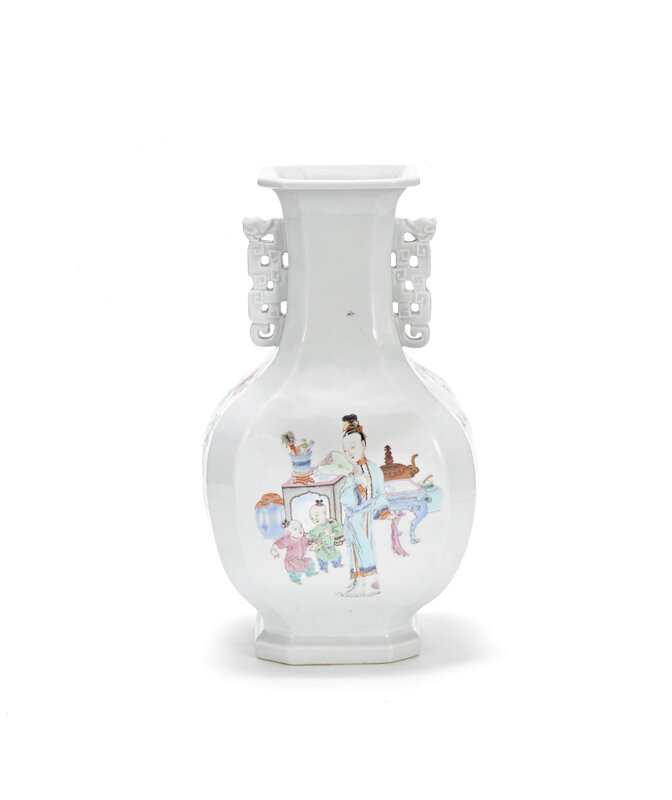




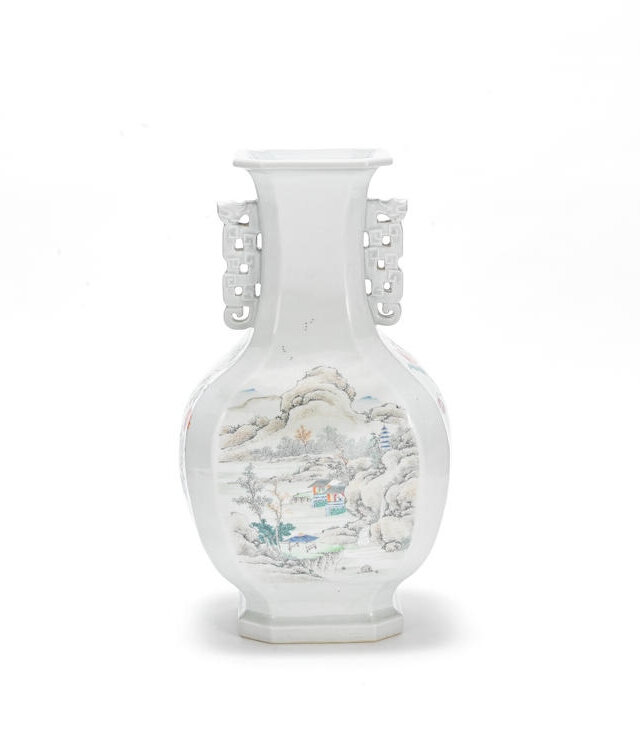








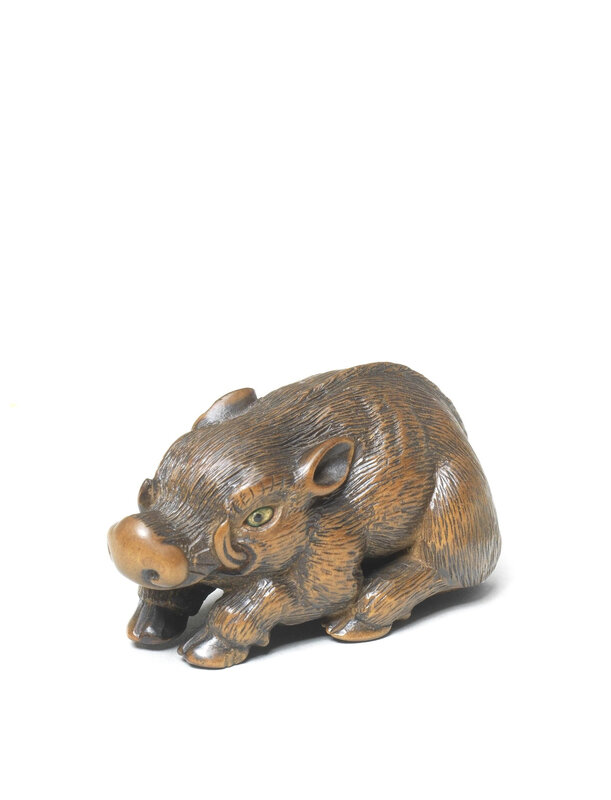


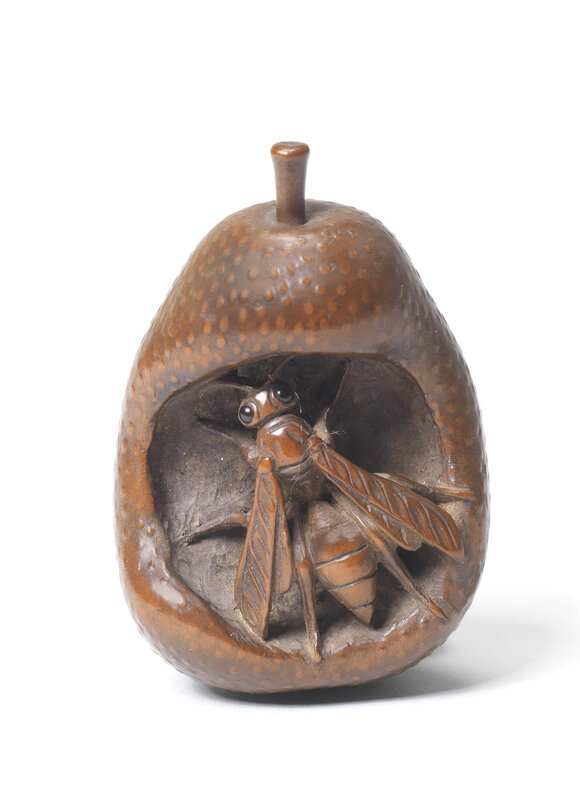
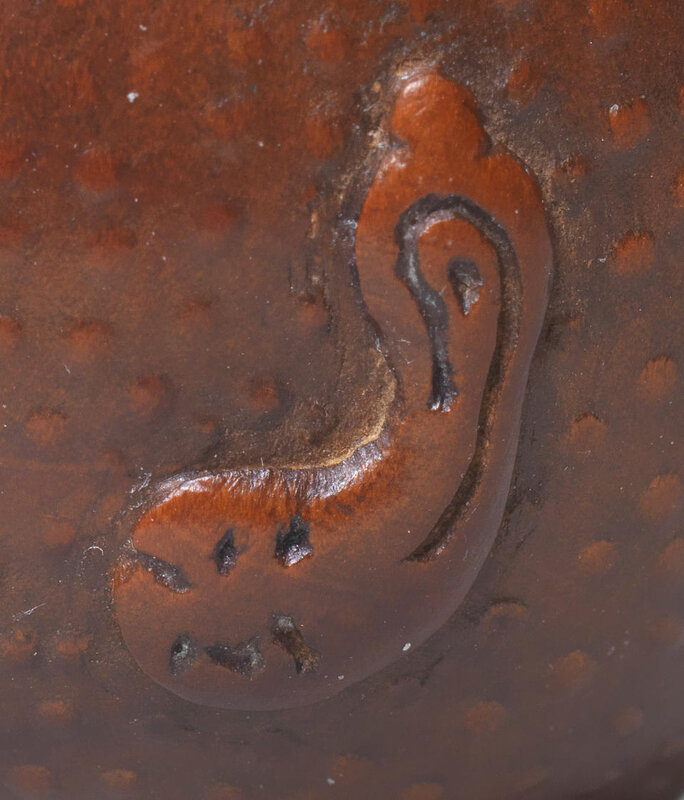



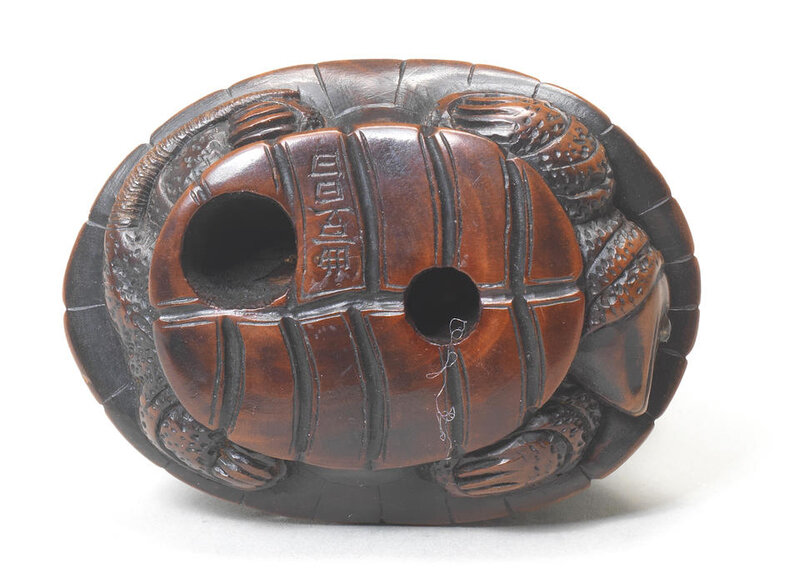










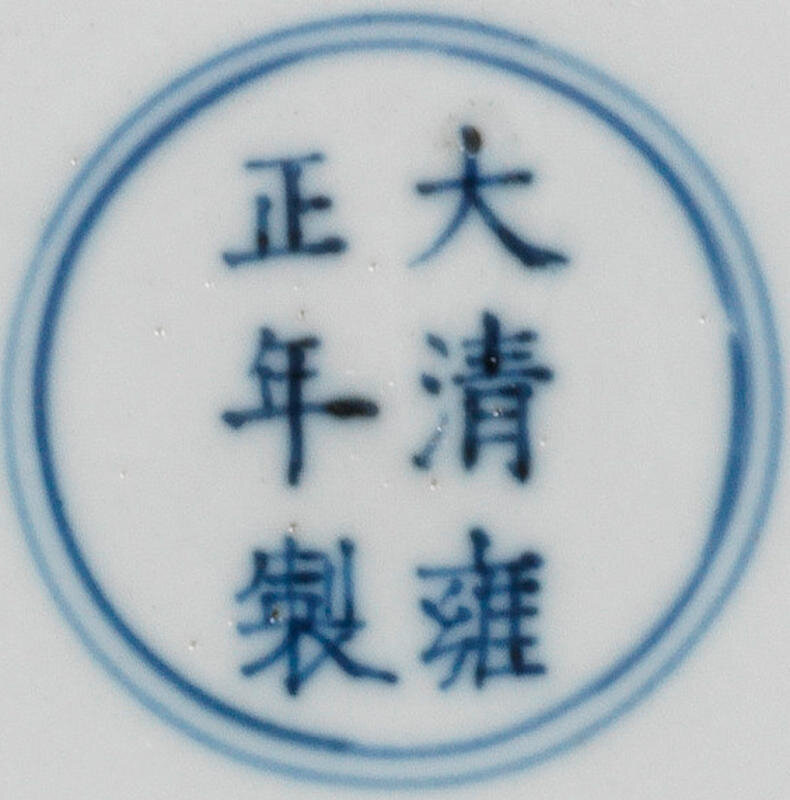

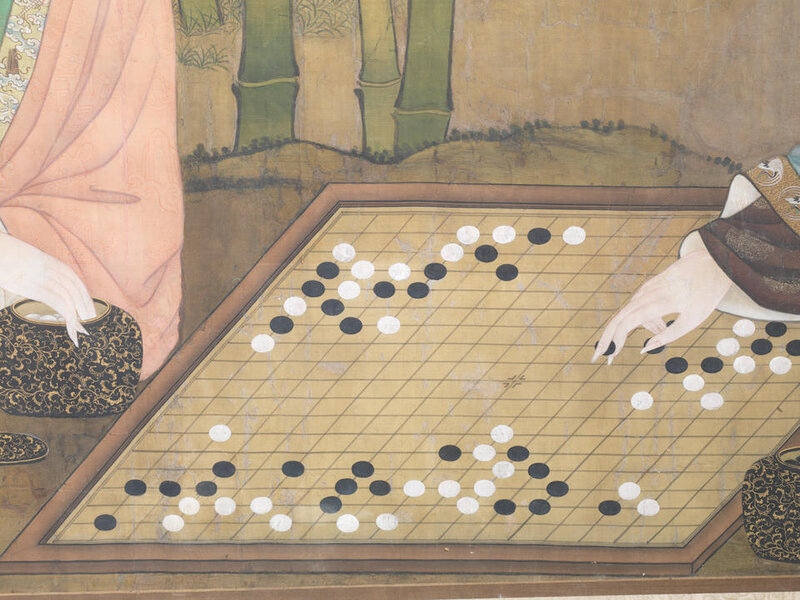







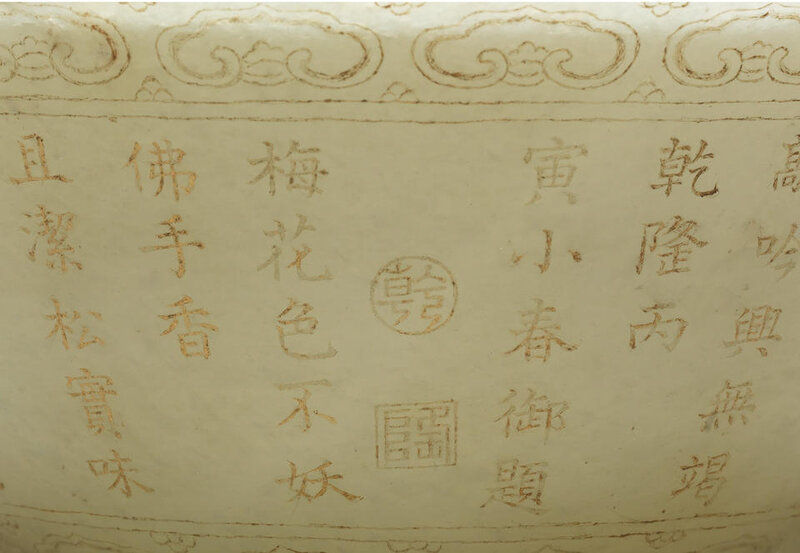
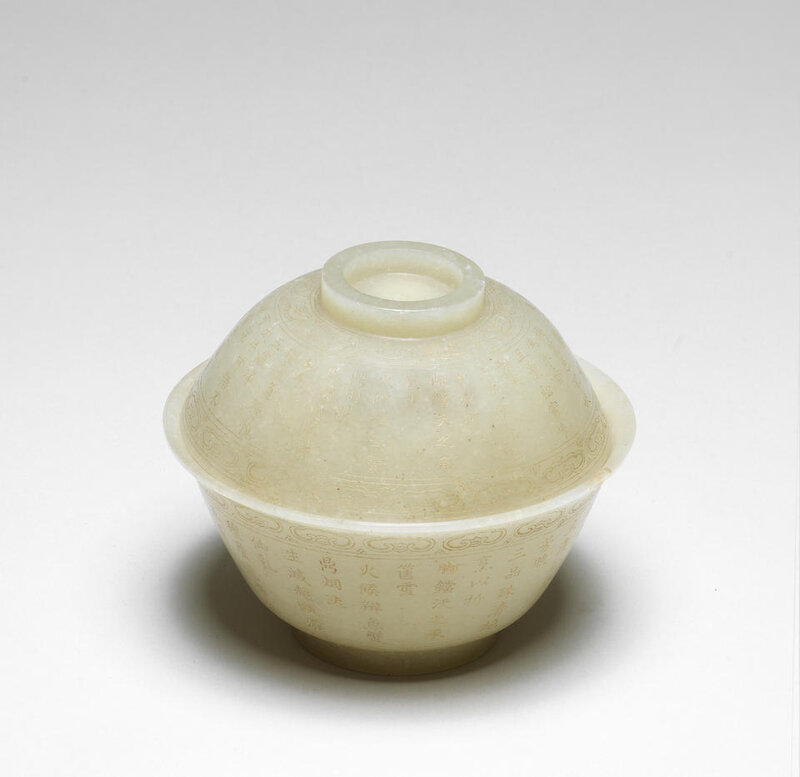
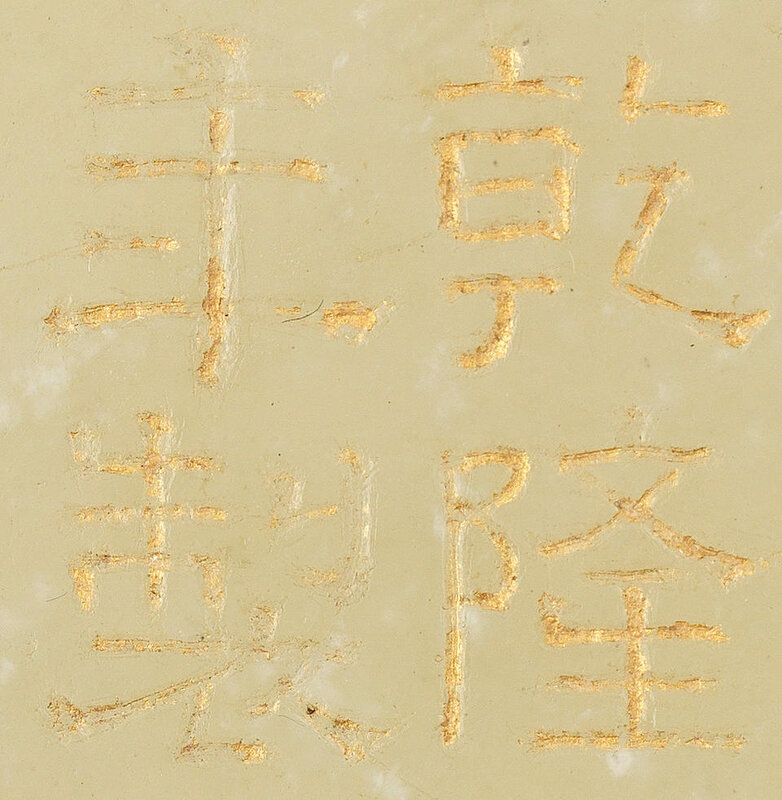

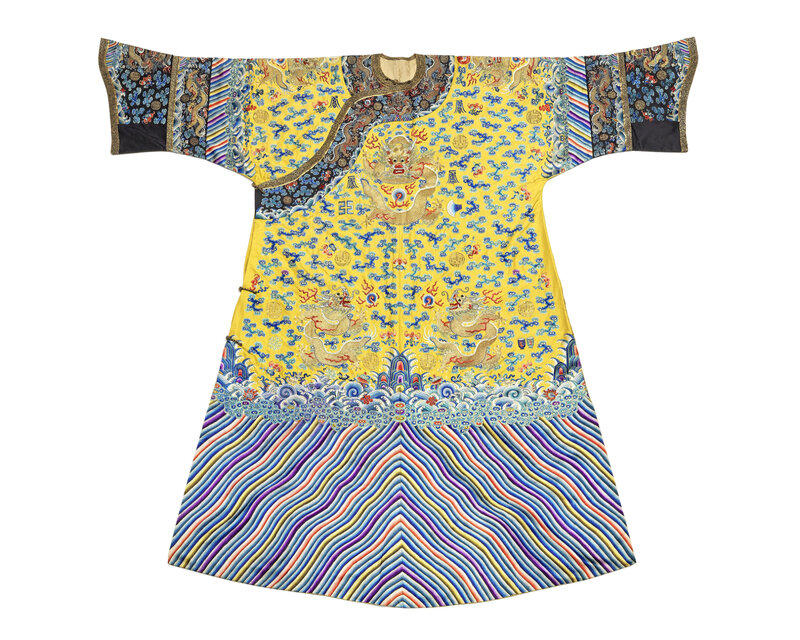

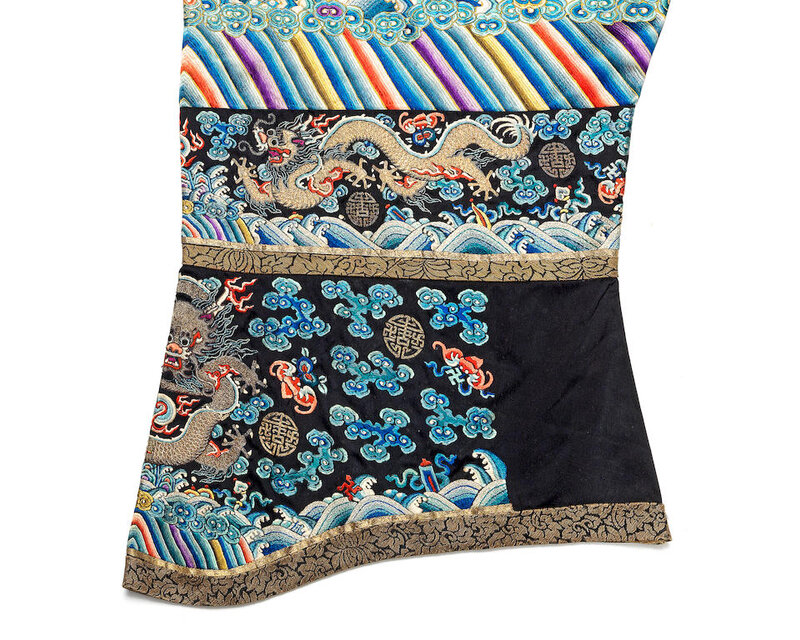



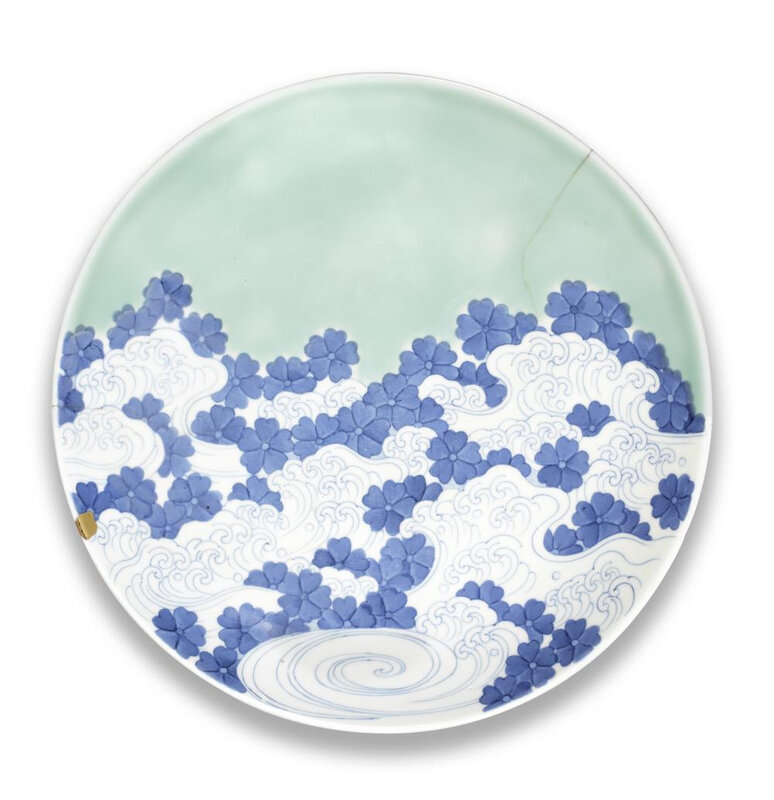





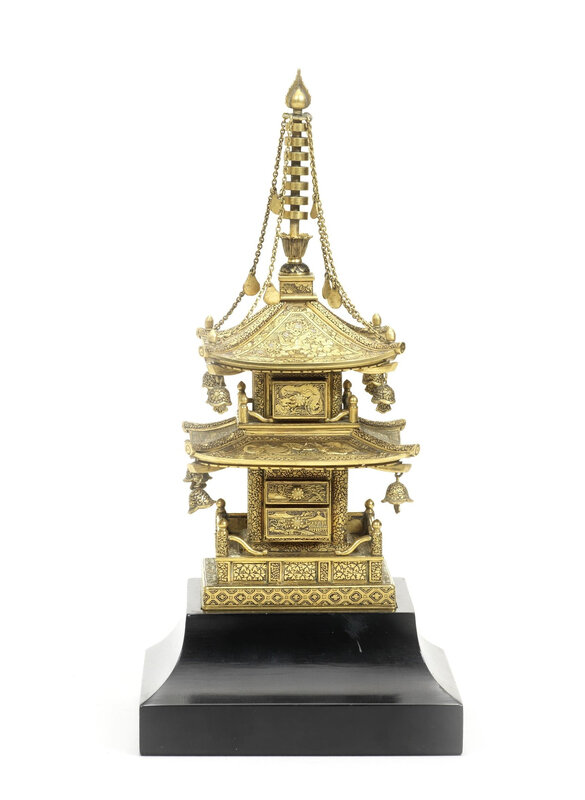






/http%3A%2F%2Fstorage.canalblog.com%2F91%2F48%2F119589%2F128923043_o.jpg)
/http%3A%2F%2Fstorage.canalblog.com%2F84%2F09%2F119589%2F128922928_o.jpg)
/http%3A%2F%2Fstorage.canalblog.com%2F74%2F57%2F119589%2F128709421_o.jpg)
/http%3A%2F%2Fstorage.canalblog.com%2F96%2F72%2F119589%2F128683141_o.jpg)